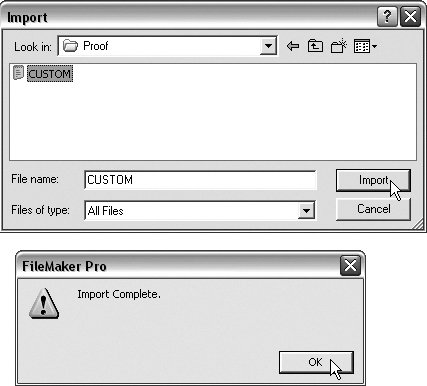
Ĭompiler optimizations may recognize expressions of the form expression % constant where constant is a power of two and automatically implement them as expression & (constant-1), allowing the programmer to write clearer code without compromising performance.
Filemaker pro calculations clean text software#
In devices and software that implement bitwise operations more efficiently than modulo, these alternative forms can result in faster calculations. For example, the modulo of powers of 2 can alternatively be expressed as a bitwise AND operation (assuming x is a positive integer, or using a non-truncating definition): For special cases, on some hardware, faster alternatives exist. Modulo operations might be implemented such that a division with a remainder is calculated each time. In nearly all computing systems, the quotient q and the remainder r of a divided by n satisfy the following conditions:īool is_odd ( int n ) Performance issues

Computers and calculators have various ways of storing and representing numbers thus their definition of the modulo operation depends on the programming language or the underlying hardware. In mathematics, the result of the modulo operation is an equivalence class, and any member of the class may be chosen as representative however, the usual representative is the least positive residue, the smallest non-negative integer that belongs to that class (i.e., the remainder of the Euclidean division). When exactly one of a or n is negative, the naive definition breaks down, and programming languages differ in how these values are defined. See Modular arithmetic for an older and related convention applied in number theory.
Filemaker pro calculations clean text mod#
The range of values for an integer modulo operation of n is 0 to n − 1 inclusive ( a mod 1 is always 0 a mod 0 is undefined, possibly resulting in a division by zero error in some programming languages). įor example, the expression "5 mod 2" would evaluate to 1, because 5 divided by 2 has a quotient of 2 and a remainder of 1, while "9 mod 3" would evaluate to 0, because 9 divided by 3 has a quotient of 3 and a remainder of 0 there is nothing to subtract from 9 after multiplying 3 times 3.Īlthough typically performed with a and n both being integers, many computing systems now allow other types of numeric operands. Given two positive numbers a and n, a modulo n (often abbreviated as a mod n) is the remainder of the Euclidean division of a by n, where a is the dividend and n is the divisor.

In computing, the modulo operation returns the remainder or signed remainder of a division, after one number is divided by another (called the modulus of the operation).


 0 kommentar(er)
0 kommentar(er)
